Concrete is a popular building material, but it can be susceptible to water damage. If you’re looking for information on how to waterproof concrete, you’ve come to the right place! In this comprehensive guide, we will discuss everything you need to know about waterproofing concrete. We will cover the different methods that can be used, as well as the pros and cons of each method. By the end of this article, you will know how to protect your concrete from water damage!
Why Should You Waterproof Concrete?
There are many reasons why you should waterproof concrete. Waterproofing concrete will:
- Prevent water from seeping through cracks and causing damage to the underlying structure;
- Reduce the risk of freeze-thaw damage;
- Increase the durability of the concrete;
- Improve the appearance of the concrete by preventing staining;
- Make the concrete easier to clean;
Waterproofing concrete is a necessary step in protecting your investment and ensuring that it will last for years to come. There are many different ways to waterproof concrete, and the best method will depend on the specific needs of your project. Here is a comprehensive guide to waterproofing concrete, so you can make an informed decision about the best way to protect your investment. [1]
How to Prep Concrete for Waterproofing?
It is important to prep your concrete before waterproofing it. This will ensure that the waterproofing material adheres properly and creates a seamless barrier.
Begin by pressure washing the concrete surface to remove any dirt, debris, or loose materials. Be sure to use a detergent designed for concrete surfaces. Once the surface is clean, allow it to dry completely.
Next, repair any cracks or holes in the surface with a concrete patching compound. Once the patching compound is dry, sand the area smoothly with medium-grit sandpaper.
Finally, apply a concrete primer to the surface using a roller or brush. Be sure to follow the manufacturer’s instructions for proper coverage and drying time.
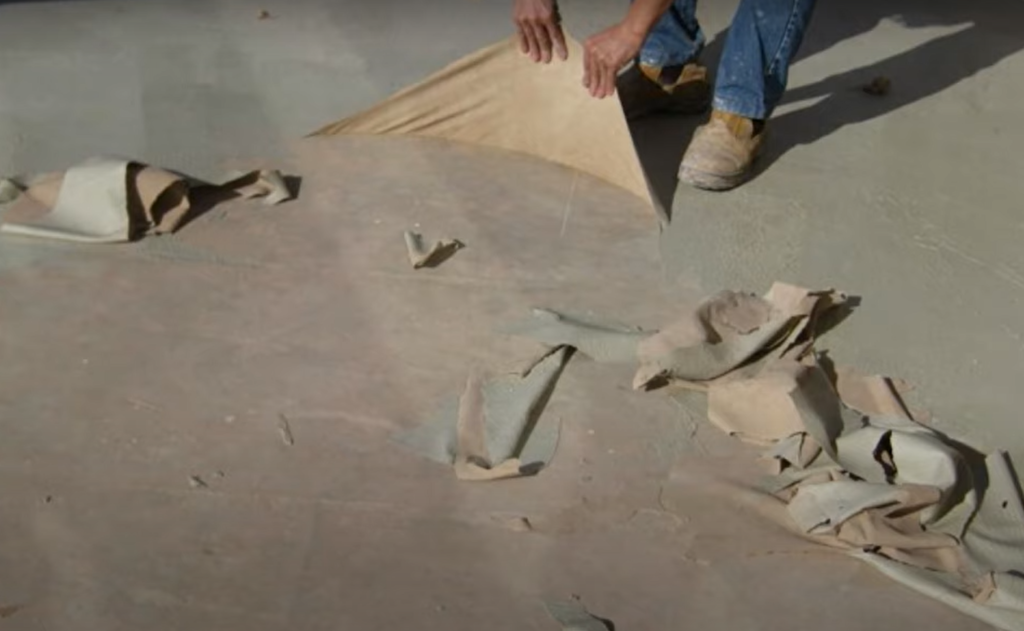
Concrete Waterproofing Methods
Liquid Waterproofing Application
There are two ways to apply liquid waterproofing: through surface coatings or by impregnating the concrete. Surface coatings act as a barrier between the concrete and water while impregnating waterproofing products penetrate the pores of the concrete to form an internal barrier.
Surface Coatings for Concrete Waterproofing
Surface coatings are applied to the surface of cured concrete and typically form a membrane that is less than 10 mils (0.254 mm) thick. Surface coatings can be either clear or tinted, but they must be properly applied in order for them to be effective at waterproofing concrete. Applying a surface coating to concrete is typically done with a roller or brush, and it is important to follow the manufacturer’s instructions for coverage and curing times.
Surface coatings can be either elastomeric or rigid. Elastomeric coatings are typically used on horizontal surfaces because they are able to expand and contract with the concrete as it changes temperature. Rigid coatings are better suited for vertical surfaces because they do not have this flexibility. Silane-based sealers are a type of surface coating that can be used on both horizontal and vertical surfaces. [2]
Crystalline Slurry Compound Application
Crystalline slurry compounds are usually mixed with water and applied to concrete surfaces with a brush or roller. The mixture penetrates the concrete and reacts with the calcium hydroxide to form insoluble calcium silicate hydrate crystals. These crystals fill the pores and capillaries of the concrete, which blocks the passage of water and moisture. Crystalline slurry compounds can be used on both horizontal and vertical surfaces, but they are typically used on below-grade applications because they require a damp surface in order for the reaction to occur. Crystalline slurry compounds can also be used as an admixture in concrete mixtures.
Rubberized Sheets Installation
Rubberized sheets are made of bitumen-coated fabric and are typically used on below-grade applications. They are installed over the surface of cured concrete and act as a barrier to water and moisture. Rubberized sheets must be properly lapped and sealed at all seams in order for them to be effective. [3]
Cementitious Waterproofing Application
Cementitious waterproofing products are mixed with water and applied to concrete surfaces with a brush or roller. They form a barrier that is impermeable to water and moisture. Cementitious waterproofing products can be used on both horizontal and vertical surfaces, but they are typically used on below-grade applications.
Bentonite Sheets Installation
Bentonite sheets are made of a clay-like material that expands when it comes into contact with water. They are installed over the surface of cured concrete and act as a barrier to water and moisture. Bentonite sheets must be properly lapped and sealed at all seams in order for them to be effective.
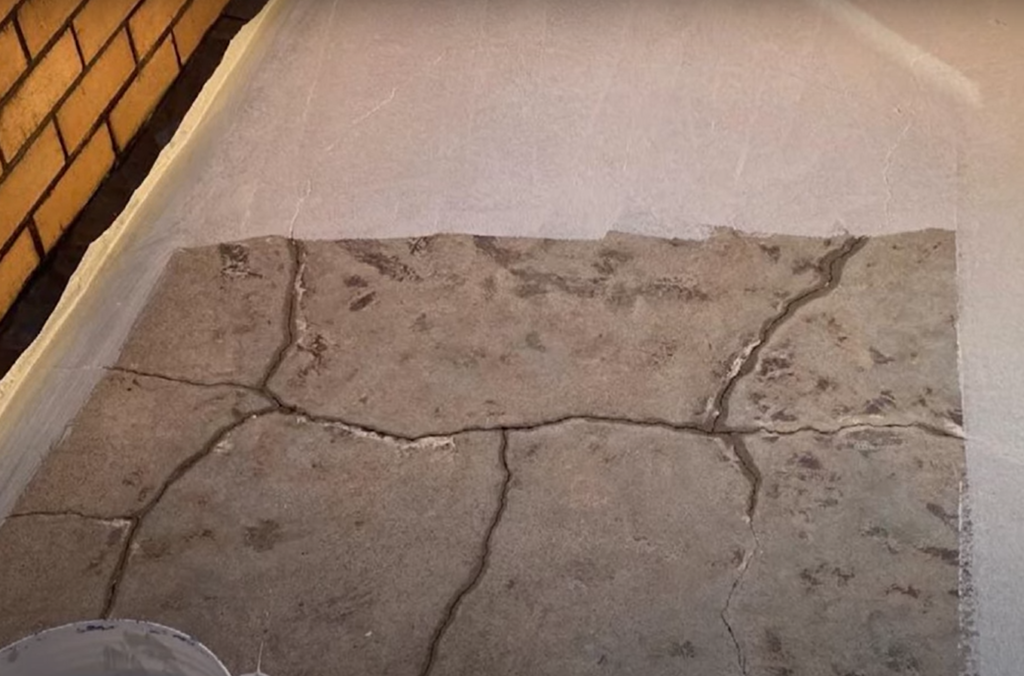
Membrane Waterproofing Installation
Repairing Leaks & Cracks
The first step in repairing leaks and cracks is to clean the surface of the concrete. This can be done with a wire brush, power washer, or sandblaster. Once the surface is clean, the repair material can be applied. The type of repair material will depend on the size and location of the leak or crack. Small cracks (less than ¼ inch) can be repaired with a concrete patching compound. Larger cracks (greater than ¼ inch) should be repaired with a polyurethane or epoxy resin. Leaks can be repaired with an injection of either polyurethane or epoxy resin.
How to Choose the Right Materials?
When it comes to waterproofing concrete, there are a variety of materials that can be used. Depending on the location and purpose of the concrete, different materials may be more appropriate. Below is a list of some common waterproofing materials:
- Elastomeric coatings: These are thin, rubber-like coatings that are applied to concrete to create a water-resistant barrier. Elastomeric coatings are typically used on exterior surfaces, such as sidewalks and patios;
- Concrete sealers: Concrete sealers are clear or tinted liquids that are applied to concrete to create a water-resistant barrier. Sealers can be applied to both interior and exterior surfaces;
- Membranes: Membranes are sheets of material that are applied to concrete to create a water-resistant barrier. Membranes are typically used on exterior surfaces, such as foundation walls and basement floors;
- Caulking: Caulking is a sealant that is applied to gaps and cracks in concrete to prevent water from passing through. Caulking can be applied to both interior and exterior surfaces [5];
Choosing the right waterproofing material for your needs is important in ensuring that your concrete is properly protected from water damage. If you are unsure of which material to use, consult with a professional contractor or waterproofing specialist.
Things to Avoid When Waterproofing Concrete
When waterproofing concrete, it’s important to avoid common mistakes that can lead to problems down the road. Here are a few things to avoid:
- Not using a primer: A primer is an essential first step in waterproofing concrete. It helps to create a barrier between the concrete and the waterproofing material. Without a primer, the waterproofing material may not adhere properly to the concrete, leading to leaks;
- Applying the waterproofing material too thick: If the waterproofing material is applied too thick, it can crack and peel over time. It’s important to follow the manufacturer’s instructions for proper application thickness;
- Not using enough sealer: When applying sealer to the concrete, it’s important to use enough to create a good seal. If the sealer is applied too thinly, it may not provide adequate protection against water leaks;
- Applying the sealer in hot weather: Hot weather can cause the sealer to dry too quickly, which can lead to cracks and bubbles. It’s best to apply sealer in cool or cloudy weather;
- Not giving the sealer enough time to cure: After applying the sealer, it’s important to give it time to cure properly. This usually takes 24-48 hours. If you try to apply a second coat of sealer before the first coat has healed, you may end up with a sticky mess that won’t protect your concrete from water leaks;
Waterproofing concrete is an important step in protecting your investment. By following these simple tips, you can avoid common mistakes that can lead to problems down the road.
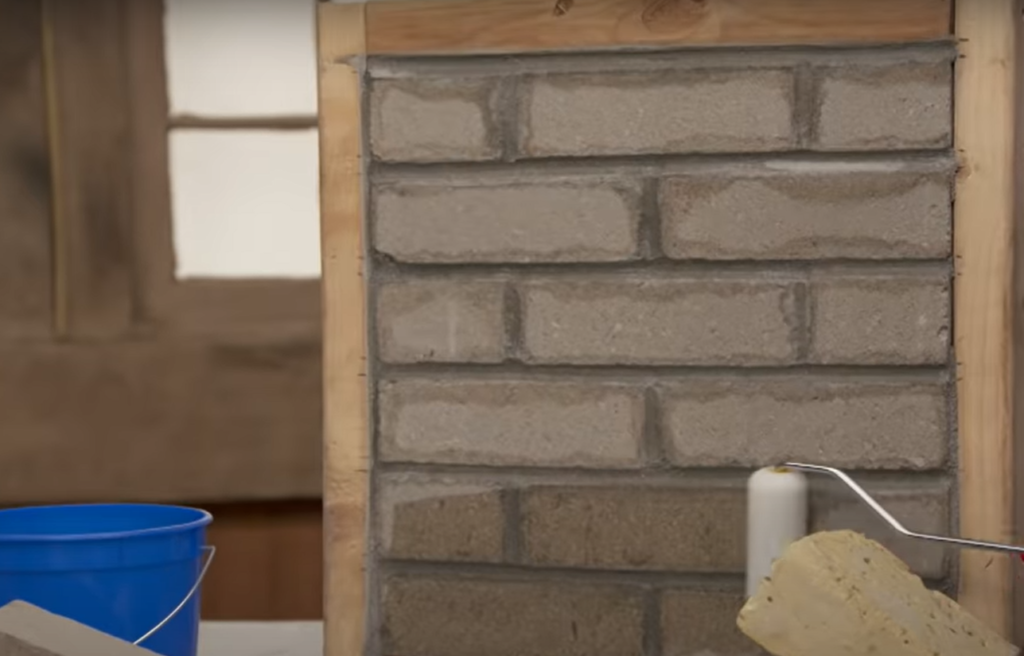
Benefits and Cons of Waterproofing Concrete
Whether you’re looking to protect your concrete from the elements or want to improve its appearance, waterproofing concrete is a good option. This treatment can be applied to new or existing concrete surfaces and can provide many benefits, including:
- Reduced cracking and spalling;
- Increased durability;
- Improved resistance to weathering, freeze/thaw cycles, staining, and deicing salts;
- Enhanced appearance;
However, there are also some potential drawbacks to waterproofing concrete that you should be aware of before deciding if it’s the right solution for you. These include:
- Increased risk of ponding water on the surface of the concrete (this can happen if the slope of the concrete is not adequate or if gutters or downspouts are not properly installed);
- Possible decreased breathability of the concrete, which can lead to trapped moisture and increased risk of mold growth;
- Increased likelihood of surface defects (such as blisters or delamination) if the concrete is not adequately prepared before waterproofing;
If you’re considering waterproofing your concrete, it’s important to weigh the pros and cons carefully to decide if this treatment is right for you.
FAQ
How do you make concrete waterproof?
There are a few ways to waterproof concrete, but the most common is to use a sealant or coating. A sealant is a liquid that is applied to the surface of the concrete, and it forms a protective barrier that keeps water from seeping in. A coating is a type of paint that is applied to the surface of the concrete, and it also forms a protective barrier that keeps water from seeping in.
What are some common sealants and coatings?
There are many different types of sealants and coatings available, and each one has its own advantages and disadvantages. Some of the most common sealants and coatings include asphalt emulsion, acrylic latex, urethane coatings, and silicone coatings.
What are the benefits of waterproofing concrete?
Waterproofing concrete has many benefits, including reducing the risk of water damage, extending the life of the concrete, and making it easier to clean.
What are the drawbacks of waterproofing concrete?
The main drawback of waterproofing concrete is that it can make the surface more difficult to walk on, and it can also make it more difficult to apply paint or other finishes. In addition, waterproofing concrete can increase the cost of the project.
How long does waterproofing concrete last?
What are some tips for waterproofing concrete?
Some tips for waterproofing concrete include using a sealant or coating that is specifically designed for concrete and making sure that the surface is clean and dry before applying the sealant or coating. In addition, it is important to follow the manufacturer’s instructions carefully when applying a sealant or coating to concrete.
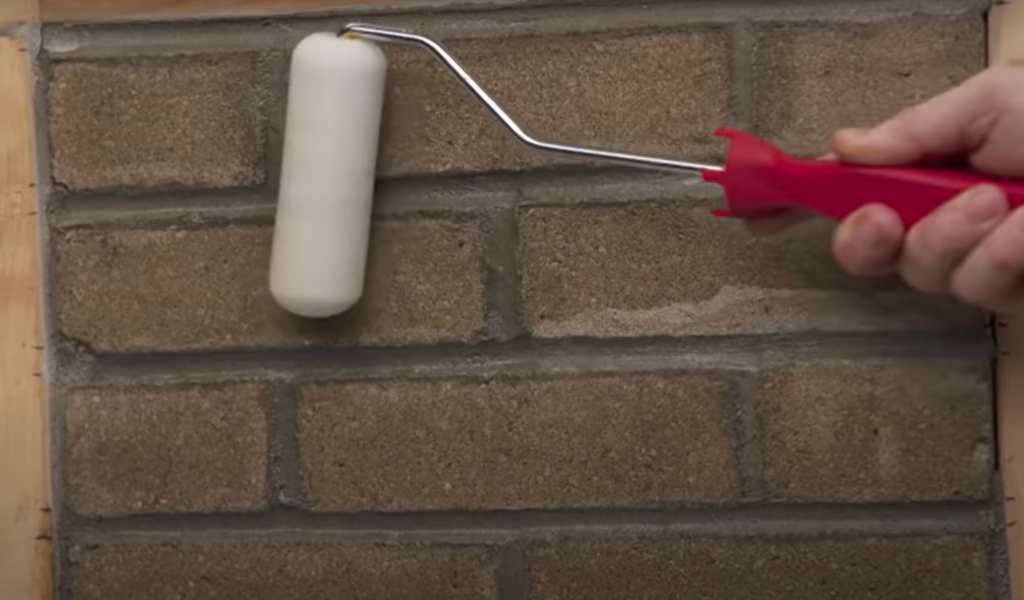
What do you mix with concrete to waterproof it?
The most common way to waterproof concrete is to use a sealant or coating. A sealant is a liquid that is applied to the surface of the concrete, and it forms a protective barrier that keeps water from seeping in. A coating is a type of paint that is applied to the surface of the concrete, and it also forms a protective barrier that keeps water from seeping in.
Is there a difference between waterproofing and sealing concrete?
Waterproofing and sealing concrete are two different processes. Waterproofing concrete refers to the process of making the surface of the concrete resistant to water damage while sealing concrete refers to the process of protecting the surface of the concrete from stains and other types of damage.
Does power washing remove concrete sealer?
Power washing can remove some types of concrete sealers, but it is not effective at removing all types. If you are unsure whether or not power washing will remove your concrete sealer, you should consult with a professional.
Useful Video: How To Waterproof Concrete
Conclusion
Waterproofing concrete is a necessary step in protecting your investment. By taking the time to waterproof your concrete, you can extend the life of your concrete and avoid costly repairs down the road. There are a variety of waterproofing products on the market, so be sure to do your research to find the best one for your needs. When in doubt, consult a professional waterproofing contractor who can help you select the right product and provide expert installation services.
References:
- https://gcpat.com/en/about/news/blog/waterproof-concrete-it-enough-protecting-foundations
- https://www.tremcocpg-asiapacific.com/blog/sheet-vs-fluid-applied-waterproofing
- https://www.eproinc.com/blog/everything-you-need-to-know-about-hot-fluid-applied-rubberized-asphalt-waterproofing
- https://jobs-amst.com/blog/what-are-waterproofing-membranes-the-types-and-applications/
- http://www.acrymax.com/blog/?p=172

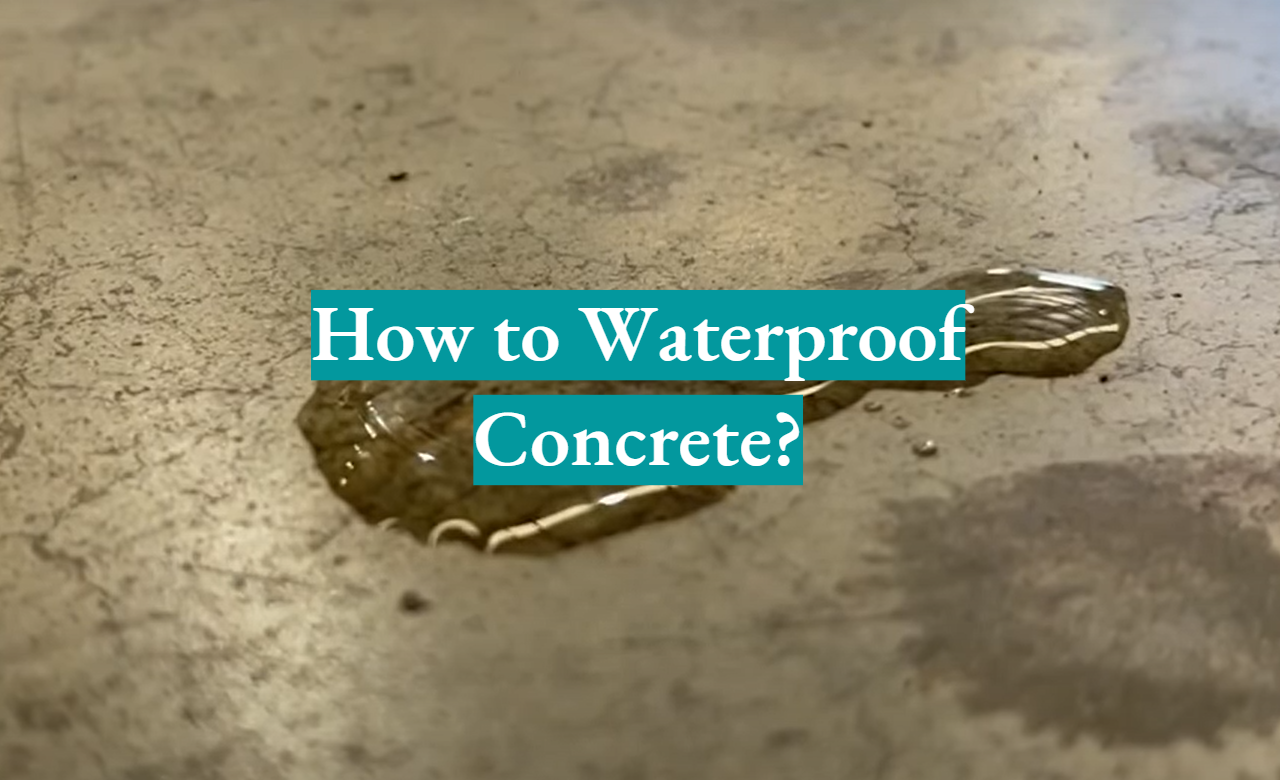
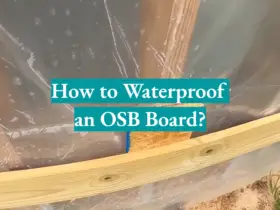
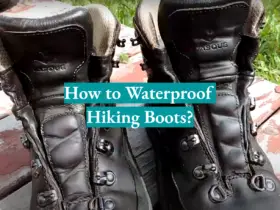

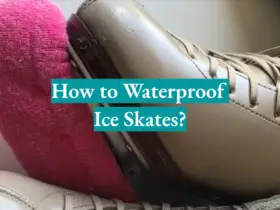
Leave a Reply